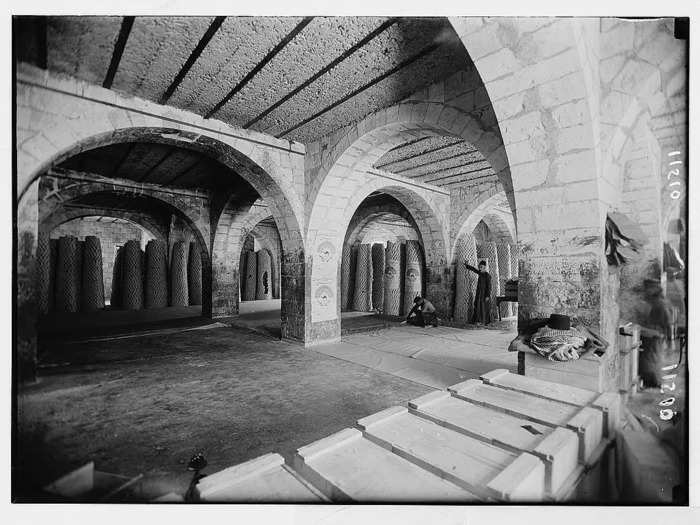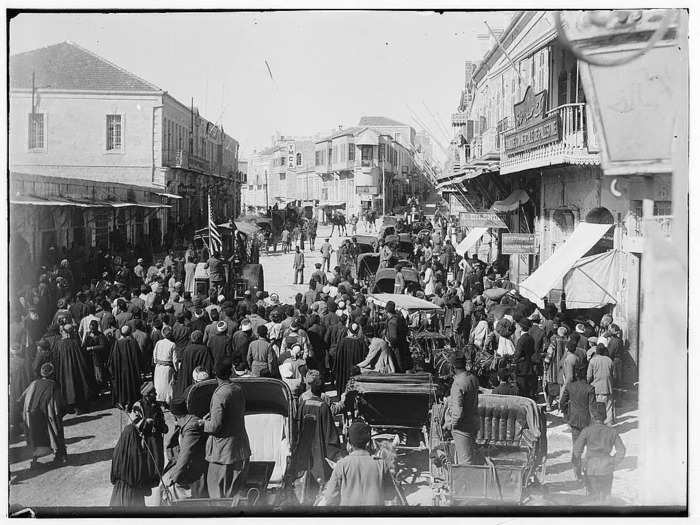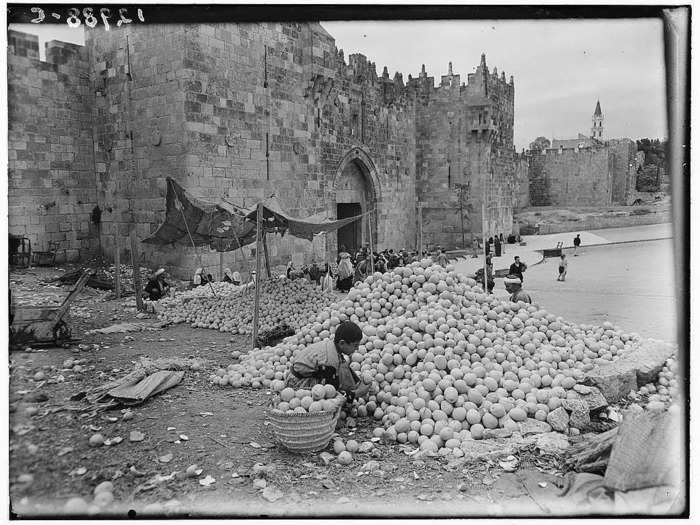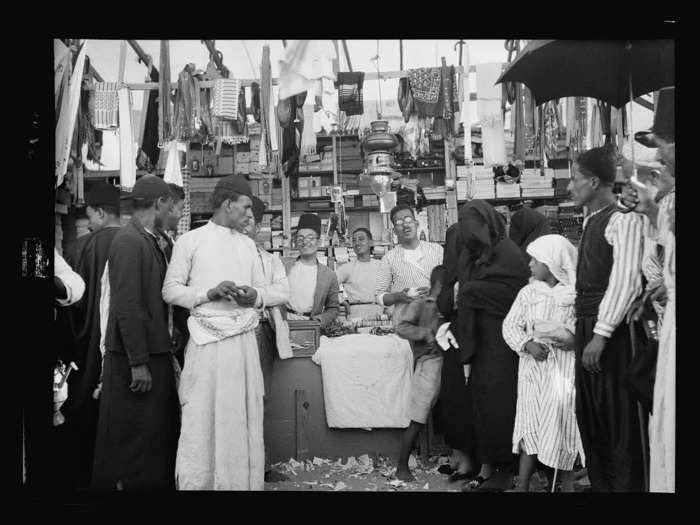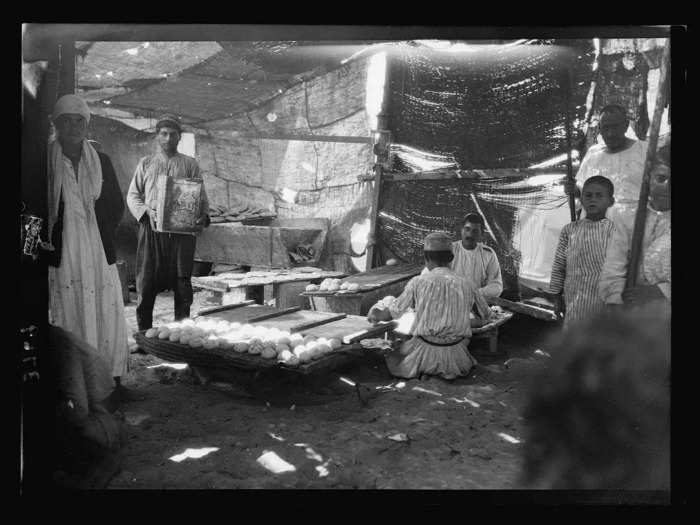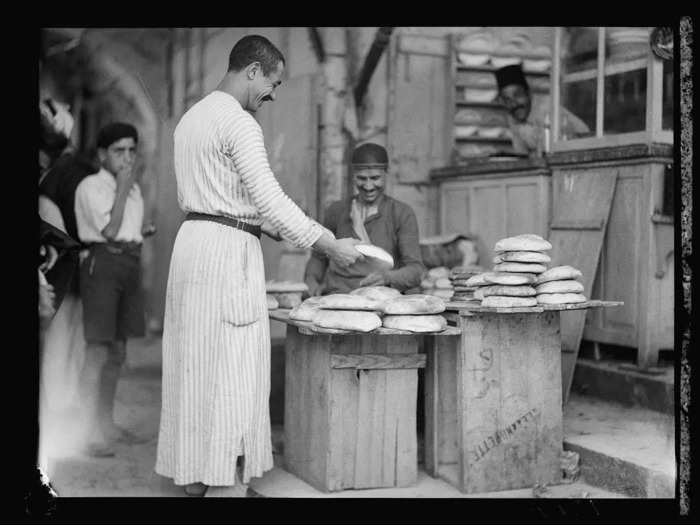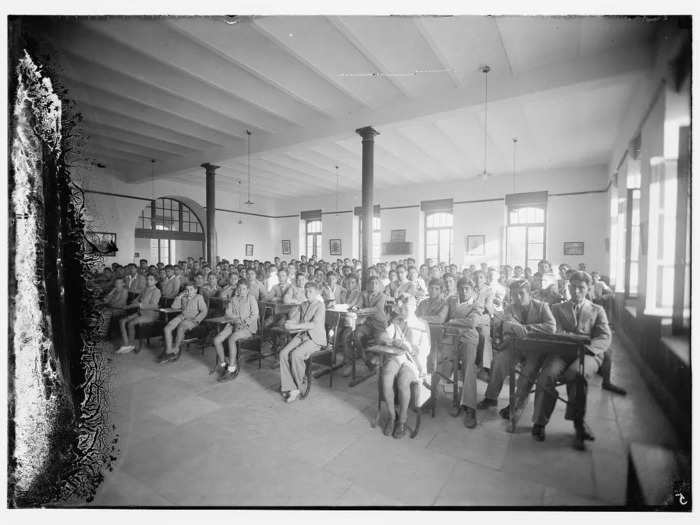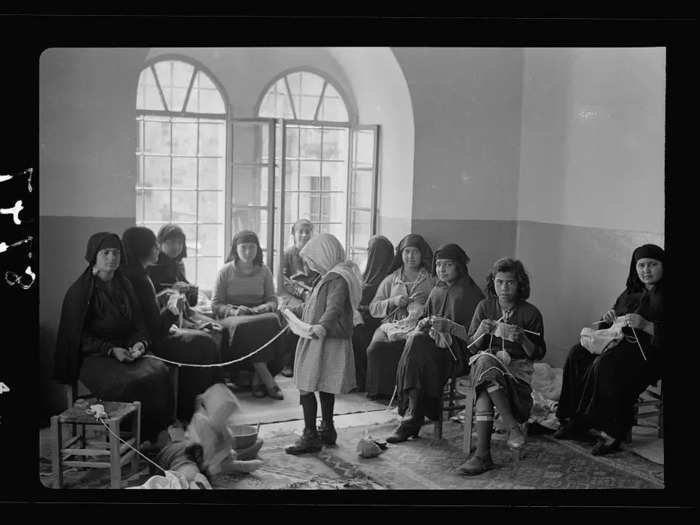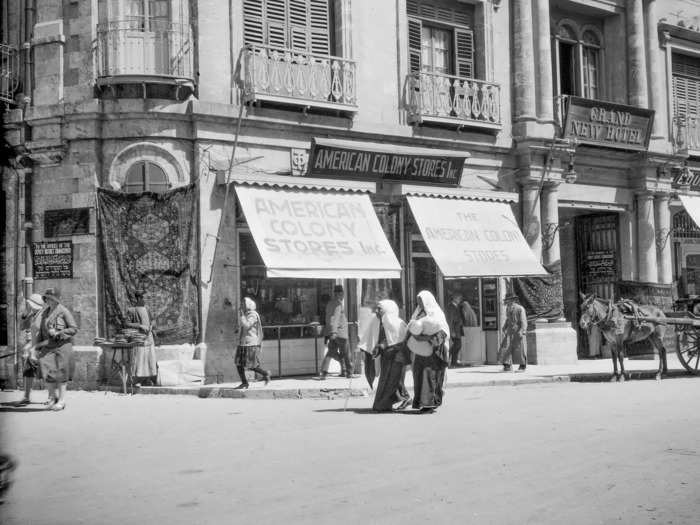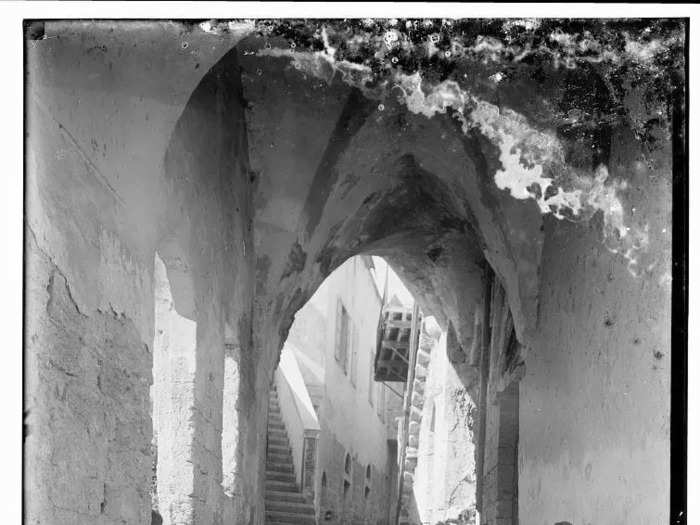People crowd around a steamroller rolling down Jerusalem street.Matson photograph collection via Library of Congress.
- Palestine had a successful importing and exporting industry at the beginning of the 20th century.
- The expansion of railroads throughout Palestine to neighboring countries helped the region's growth in business.
At the end of World War I, the British occupied the formerly Ottoman-controlled Palestine and declared the establishment in Palestine of a national home for Jewish people. For the next two decades, over 100,000 Jews entered Palestine.
Tensions reached their boiling point after the British withdrew from Palestine in 1948 and the Arab-Israeli War began.
Despite moments of heavy tension and conflict within Palestine during British occupation, life and commerce continued. Historical photos offer a glimpse into everyday life in Palestine before the withdrawal of British troops.
In the 1920s, Jerusalem started to become an important commercial center.
The Nablus soap stock room where soap is stacked to dry. Matson photograph collection via Library of Congress.
In the 1920s, Jerusalem grew its reputation as a key commercial center, in tandem with the coastal cities of Jaffa and Gaza, which helped with the importing and exporting of goods.
Palestine became a trading hub, trading soap, grain, and cotton to Europe, Africa, and the Middle East.
Gaza and Jaffa imported goods from Egypt, Istanbul, China, India, and France.
Palestine utilized the new influx of commerce to build roads and railroads that connected Jerusalem to other ports and cities.
People crowd around a steamroller rolling down Jerusalem street. Matson photograph collection via Library of Congress.
When railroads started being constructed in Palestine in the late 19th and early 20th century, connections became easier and faster, and employment opportunities grew. The trains connected Palestine to neighboring African, Asian, and European markets in a different way than their ports could.
Produce was bountiful and available to buy on a small or large scale.
A boy collects Palestinian oranges at Damascus gate. Matson photograph collection via Library of Congress.
It was sold at outdoor markets or processed in factories to be sold.
Investments from neighboring countries solidified a strong trade economy.
A typical dry goods stall in Nebi Rubin (The Prophet Reuben), Southern Palestine. Matson photograph collection via Library of Congress.
People would come to work for trade in the city or on the railways.
Locals ran food markets and bakeries.
A bakery in Nebi Rubin (The Prophet Reuben) in Southern Palestine. Matson photograph collection via Library of Congress.
People went about their daily lives, buying groceries and interacting with their neighbors.
A Palestinian baker sells bread to a customer. Matson photograph collection via Library of Congress
The Friends of Ramallah, a Quaker organization, opened up schools for children.
Children at the Ramallah Quaker Mission School. Matson photograph collection via Library of Congress.
A number of small schools were opened in different villages for girls in 1869. Later, the Friends of Ramallah would open a "Girls Training Home of Ramallah," where girls from neighboring cities could stay and learn.
The Friends of Ramallah began the boys' school in 1901 which was on a different site than the girls' school. However, for an hour and a half each week, the boys and girls would engage in co-educational classes.
Women of different ages would gather to knit and spin wool at the Women's Institute.
Arab women of the Women's Institute in Old City. Matson photograph collection via Library of Congress
There were still constant reminders of the presence of a foreign occupier throughout the first half of the 20th century.
Two women walk in front of an American market in Palestine. Matson photograph collection via Library of Congress.
Despite a booming trade economy, British occupation still loomed heavily in the streets of Palestinian cities.
After the defeat of the Ottoman Empire in 1917, the British took control of Palestine and occupied the region for 30 years.
The British occupation also began the establishment in Palestine of a "national home for the Jewish people," mandated by the Balfour Declaration, named after British Foreign Secretary Arthur Balfour.
Despite the civil unrest lurking in Palestine, there was also a sense of normal day-to-day life.
Old City Street, Nazareth. Matson photograph collection via Library of Congress.
By the middle of the century, the British left Palestine and left the Arab and Jewish populations to settle land disputes on their own.
The time leading up to their withdrawal was filled with bombings, protests, and demonstrations. Despite the turmoil that filled those years, photos of Palestine during that time offer glimpses of day-to-day life in markets, homes, and businesses.

